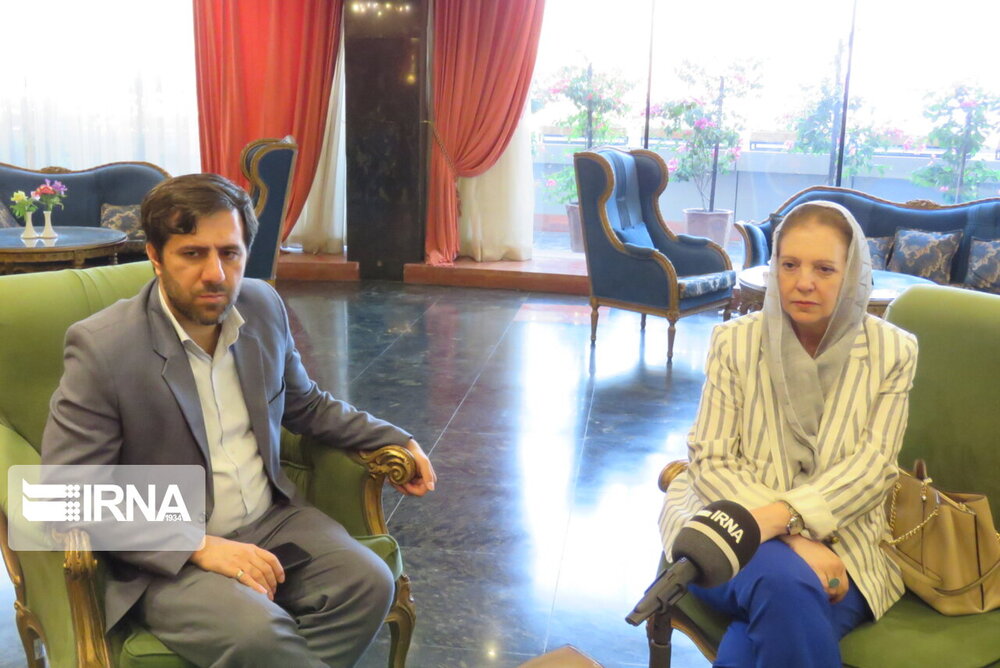Syrian minister tours historical sites in southern Iran

TEHRAN—On Sunday, Syria’s Minister of Culture Lubanah Mshaweh visited a variety of historical sites in Shiraz and its surroundings in southern Iran, IRNA reported.
Historically, Persepolis has been a center for developing national cultural ties, showcasing many aspects of women’s and human rights, the minister said.
In addition to enhancing human values, visiting it can help improve the quality of life of today’s citizens, she added.
The minister also visited Hafezieh, a major tourist spot where illustrious Persian poet Hafez is laid to rest as well as Saadieh, which is the mausoleum of the renowned Persian poet Saadi Shirazi.
“On this trip, I was intrigued by the crowds of people visiting the tombs of Persian poets Hafez and Saadi, and all of them respectfully acknowledged Iranian poets during their visit,” she noted.
It is evident that Hafez and Saadi are institutionalized in Iranian life and can play a significant role in the development of cultural relations between Iran and Syria, as well as other countries with a cultural affinity for Iran, she mentioned.
Visiting Naqsh-e Rostam, an Achaemenid necropolis near Persepolis, was also a part of the minister’s trip.
“As I visited Naqsh-e Rostam, I saw several women repairing and restoring ancient and historical works, showing that women think more precisely and technically about restoration work.”
Many cultural and historical works in Syria date back to the seventh millennium BC, demonstrating that there are common cultural roots between Iran and Syria, she concluded.
Persepolis, also known as Takht-e Jamshid, whose magnificent ruins rest at the foot of Kuh-e Rahmat (Mountain of Mercy), was the ceremonial capital of the Achaemenid Empire. It is situated 60 kilometers northeast of the city of Shiraz in Fars Province.
The royal city of Persepolis, which ranks among the archaeological sites which have no equivalent, considering its unique architecture, urban planning, construction technology, and art, was burnt by Alexander the Great in 330 BC apparently as revenge against the Persians because it seems the Persian King Xerxes had burnt the Greek City of Athens around 150 years earlier.
The city’s immense terrace was begun about 518 BC by Darius the Great, the Achaemenid Empire’s king. On this terrace, successive kings erected a series of architecturally stunning palatial buildings, among them the massive Apadana palace and the Throne Hall (“Hundred-Column Hall”).
This 13-ha ensemble of majestic approaches, monumental stairways, throne rooms (Apadana), reception rooms, and dependencies is classified among the world’s greatest archaeological sites.
Persepolis was the seat of the government of the Achaemenid Empire, though it was designed primarily to be a showplace and spectacular center for the receptions and festivals of the kings and their empire.
Situated near Persepolis, the Achaemenid necropolis of Naqsh-e Rostam, meaning “Picture of Rostam” is named after a mythical Iranian hero which is most celebrated in Shahnameh and Persian mythology.
One of the wonders of the ancient world, Naqsh-e Rostam embraces four tombs where Persian Achaemenid kings are laid to rest, believed to be those of Darius II, Artaxerxes I, Darius I, and Xerxes I, although some historians are still debating this.
There are gorgeous bas-relief carvings above the tomb chambers that are similar to those at Persepolis, with the kings standing on thrones supported by figures representing the subject nations below. There are also two similar graves situated on the premises of Persepolis that probably belong to Artaxerxes II and Artaxerxes III.
Beneath the funerary chambers are dotted with seven Sassanian-era (224–651) bas-reliefs cut into the cliff that depicts vivid scenes of imperial conquests and royal ceremonies.
ABU/AM
Leave a Comment